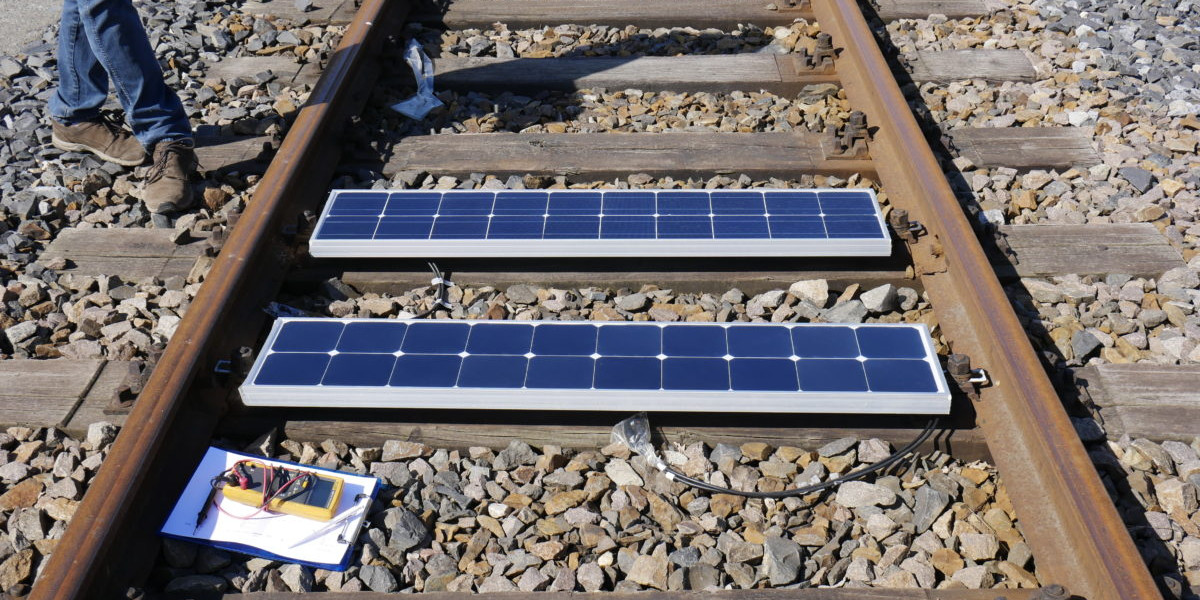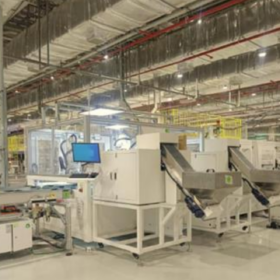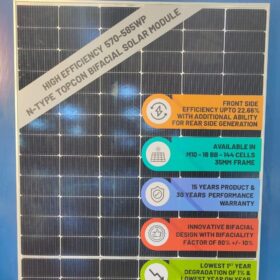From pv magazine International
Photovoltaic projects developed along railways to feed electricity directly into the traction current network are not new. German solar project developer Enerparc has built the first photovoltaic power plants in Northern Germany for this purpose. However, such projects are by no means a sure-fire success, as some technical and legal peculiarities have to be observed.
The German Center for Rail Transport Research (DZSF) at the German Federal Railway Authority has, therefore, tasked TÜV Rheinland to investigate the potential for such photovoltaic applications on and in the rail infrastructure through a 14-month research project. An interdisciplinary team of rail and solar specialists will investigate which photovoltaic applications are compatible with the rail infrastructure in order to feed solar power directly into the rail power network. In addition, it should be determined how much photovoltaics could increase the share of renewables in traction current.
“If it is possible to generate energy along the widely ramified traction current network and feed it in directly, thereby making better use of the existing infrastructure and reducing energy losses through repeated conversion and transport, the rail mode of transport could further improve its greenhouse gas balance,” explained Jürgen van der Weem, railway technology expert at TÜV Rheinland. There are various options for photovoltaics to be integrated into railways, such as in the trackbed or on noise barriers, he added. The particular challenge lies in feeding the generated solar power directly into the single-phase 15-kilovolt network.
TÜV Rheinland will implement the project in three directions. First, it wants to investigate the market potential for these projects, assess all technical aspects and components for direct feed into the traction current network and analyze existing projects.
In a second step, the German institute wants to determine the areas on and in the rail infrastructure in Germany that can be used for such applications, as well as the possible feed-in power and energy yields. For this purpose, it will rely on databases of German railway operator Deutsche Bahn as well as solar radiation maps. However, not only the direct feed into the traction current network will be considered, but also internal consumers in the railway sector that are close to the generation point.
In the third phase of the project, the TÜV Rheinland experts will establish the main requirement for PV projects connected to the railway traction network. In this context, they would be able to provide specific recommendations for the necessary adjustments to railway regulations for the integration of photovoltaic systems on and in the rail infrastructure, taking into account the direct feed-in. The project will also seek to highlight existing obstacles and restrictions and develop recommendations for their removal.
This content is protected by copyright and may not be reused. If you want to cooperate with us and would like to reuse some of our content, please contact: editors@pv-magazine.com.









By submitting this form you agree to pv magazine using your data for the purposes of publishing your comment.
Your personal data will only be disclosed or otherwise transmitted to third parties for the purposes of spam filtering or if this is necessary for technical maintenance of the website. Any other transfer to third parties will not take place unless this is justified on the basis of applicable data protection regulations or if pv magazine is legally obliged to do so.
You may revoke this consent at any time with effect for the future, in which case your personal data will be deleted immediately. Otherwise, your data will be deleted if pv magazine has processed your request or the purpose of data storage is fulfilled.
Further information on data privacy can be found in our Data Protection Policy.